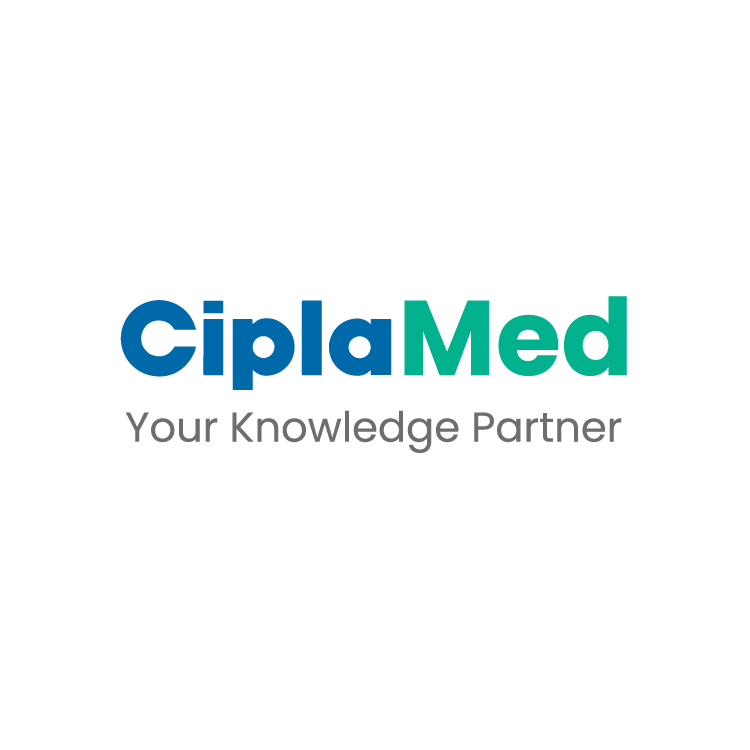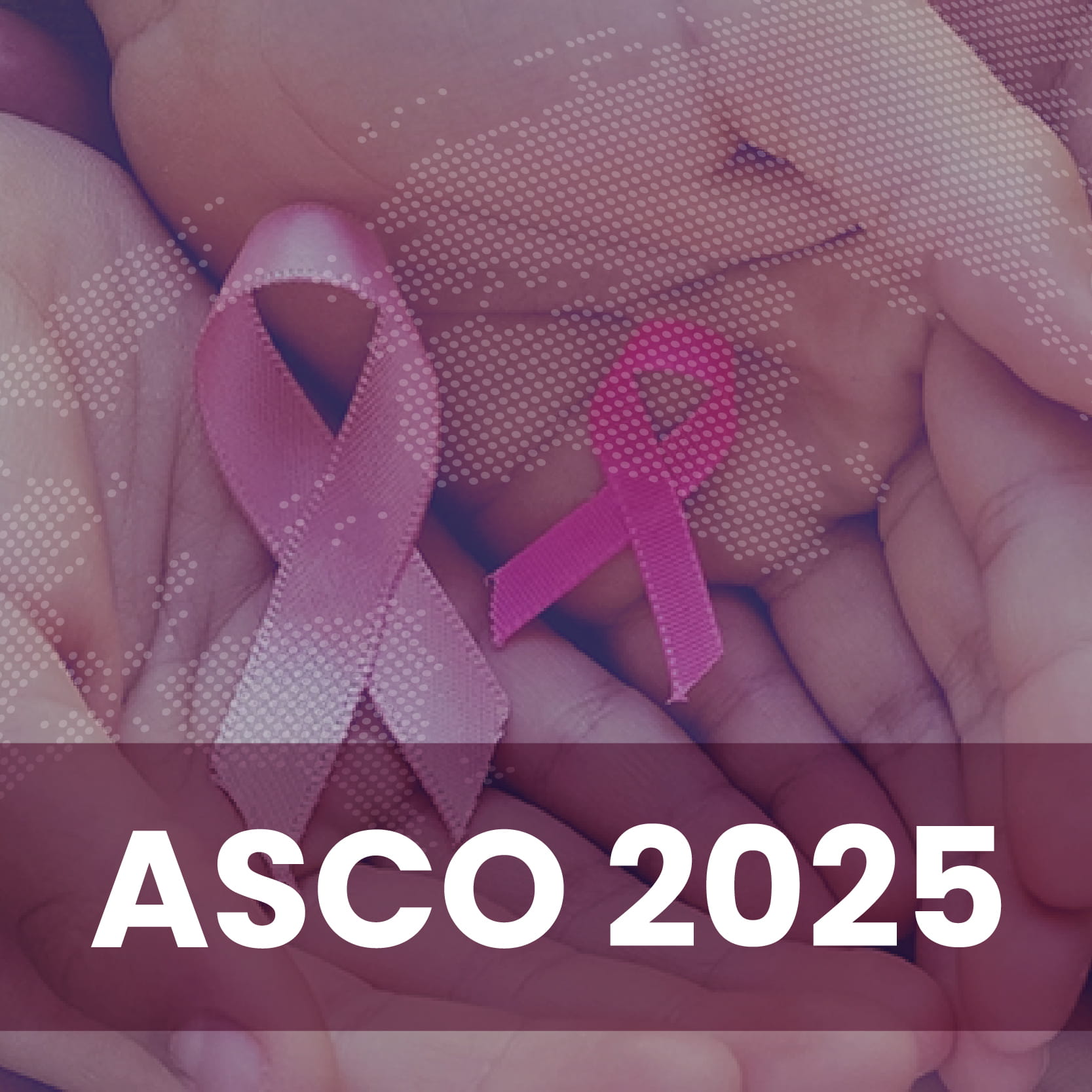ASCO 2025: Highlights from Day 2
Efficacy & Safety of Adjuvant Pembrolizumab in High-Risk Locally Advanced Cutaneous Squamous Cell Carcinoma: KEYNOTE-630 Trial Results
- In this phase 3 trial of 450 high-risk LA cSCC patients, the 24-month recurrence-free survival (RFS) rate was 78.3% for pembro vs. 68.6% for placebo (HR 0.76; P = 0.07243), failing to meet statistical significance.
- Locoregional recurrence rates were lower in the pembro group (13.8%) compared to placebo (25.3%), with distant metastasis rates at 4.4% vs. 11.6%
- The safety profile showed treatment-related adverse events in 63.8% of pembro patients, with no treatment-related deaths
Reference
Shlomo Koyfman et al Phase 3 randomized trial (KEYNOTE-630) of adjuvant pembrolizumab (pembro) versus placebo (pbo) for high-risk locally advanced cutaneous squamous cell carcinoma (LA cSCC) following surgery and radiation (RT). JCO 43, 6000, (2025).
Glofitamab plus GemOx in Relapsed/Refractory DLBCL: 2-Year Follow-Up Results from the STARGLO Trial.
- Glofitamab plus gemcitabine & oxaliplatin (Glofit-GemOx) showed significant OS benefits (median not evaluable vs. 13.5 mo for R-GemOx ;HR = 0.60)
- PFS was also superior for Glofit-GemOx at 13.8 mo vs 3.6 mo for R-GemOx (HR = 0.41).
- The CR rate was higher in the Glofit-GemOx group at 58.5% vs. 25.3% for R-GemOx; among patients in CR at end of the treatment, OS & PFS rates one year later were 89.3% & 82.4%. Median duration CR was NR.
- Safety profile remained consistent; the most common adverse event was cytokine release syndrome (Grade 1: 32.0%; Grade 2: 10.5%; Grade 3: 2.3%)
Reference
Jeremy Abramson et al, Glofitamab plus gemcitabine and oxaliplatin (Glofit-GemOx) in patients (pts) with relapsed/refractory (R/R) diffuse large B-cell lymphoma (DLBCL): 2-year (yr) follow-up of STARGLO. JCO 43, 7015, (2025).
EMBER-3 Trial: Imlunestrant, investigator’s choice standard endocrine therapy, or imlunestrant + abemaciclibin Patients with ER+, HER2- aBC
- Patient reported outcomes showed that treatment with imlunestrant resulted in improved global health status, quality of life and physical function scores vs standard therapy in patients with ESR1m
- Improvement in GHS/QOL and PF scores with imlunestrant +abemaciclib was like that with imlunestrant
- Rate of diarrhea with imlunestrant +abemaciclib was higher (22%) than those reported by the patients receiving imlunestrant (3%) or SOC (2%)
Reference
Giuseppe Curigliano et al, Patient-reported outcomes (PROs) in patients with ER+, HER2- advanced breast cancer (ABC) treated with imlunestrant, investigator’s choice standard endocrine therapy, or imlunestrant + abemaciclib: Results from the phase III EMBER-3 trial. JCO 43, 1001, (2025).
Survival Outcomes: Inavolisib /Placebo + Palbociclib + Fulvestrant in IK3CA-mutated, HR+, HER2–, endocrine-resistant aBC
- Survival outcomes with INAVO+PALBO+FULV were significantly better than PBO+PALBO+FULV; median OS 34 vs 27 mo respectively
- INAVO arm had significantly superior INV-PFS (17.2 vs 7.3 mo), and objective response rate (62.7% vs 28%) as compared to PBO arm
- INAVO substantially delayed the time to chemotherapy by approx. 2 years
- INAVO was well tolerated with no new safety signals with longer exposure
Reference
Nicholas Turner et al, INAVO120: Phase III trial final overall survival (OS) analysis of first-line inavolisib (INAVO)/placebo (PBO) + palbociclib (PALBO) + fulvestrant (FULV) in patients (pts) with PIK3CA-mutated, hormone receptor-positive (HR+), HER2-negative (HER2–), endocrine-resistant advanced breast cancer (aBC). JCO 43, 1003, (2025).
Utidelone in Combination with Etoposide and Bevacizumab Offers Promise in HER2-Negative Breast Cancer Patients with Brain Metastasis
- Utidelone in combination with etoposide and bevacizumab in HER2-negative breast cancer patients with brain metastasis resulted in CNS-ORR of 67.6% and CNS-CBR of 88.2%
- Median CNS-PFS was 15 months, with supportive treatment for some patients after extracranial progression
- Peripheral neuropathy was reported by 8.8%, while the majority of the treatment-related AEs were mild and manageable
Reference
Yehui Shi et al, Utidelone in combination with etoposide and bevacizumab in HER2-negative breast cancer patients with brain metastasis: A prospective, single-arm, phase II trial. JCO 43, LBA2012, (2025).
Olaparib in Combination with Ceralasertib for the Treatment of Recurrent & Unresectable Osteosarcoma: Insights from a Phase II Trial
- Children with osteosarcoma (cohort 1) were treated with Olaparib 150 mg twice daily (days 1-28) & Ceralasertib 80 mg twice daily (on days 1-14 of a 28-day cycle)
- Amongst 33 evaluable patients, 12% (95% CI: 4%-29%) were event-free at 4 months.The ORRwas 2.7% (95% CI: 0.14%-16%) & the 4-month event-free survival was 13.5±5.6% (n = 37).
- Decreased platelet count (38%) & anemia (27%) were the most common ≥ grade 3 adverse events recorded during the study.
- A subset of osteosarcoma patients may be benefit from this combination treatment.
Reference
Suzanne Forrest, et al. Results of a phase II trial of olaparib in combination with ceralasertib in patients with recurrent and unresectable osteosarcoma. JCO43, 10005, (2025)
LEAP-015 Study: Treatment for Advanced, Metastatic Gastroesophageal Adenocarcinoma, Lenvatinib plus Pembrolizumab & Chemotherapy vs Chemotherapy Alone
- Patients (78% PD-L1 CPS ≥1; 75% gastric primary) were randomized to receive pembrolizumab + Lenvatinib & chemo (N=443) or chemo alone (N=437).
- Interim analysis: amongst patients with PD-L1 CPS ≥1, those treated with combination vs. chemo alone, had significantly improved PFS (median 7.3 vs. 6.9 mo; HR 0.75; 95% CI, 0.62-0.9; P = 0.0012); the 24-mo PFS: 20% vs 7%.
- The PFS for all patients was also significantly better with the combination vs. chemo alone (median 7.2 vs 7.0 mo; HR 0.78; 95% CI, 0.66-0.92; P = 0.0019), 24-mo PFS: 21% vs 8%.
- The ORR with the combination was significantly better vs. chemo alone in PD-L1 CPS ≥1 patients (59.5% vs. 45.4%; P <0.0001) & in all patients (58.0% vs. 43.9%, P <0.0001).
- Final analysis: the OS did not differ significantly for both treatment groups in PD-L1 CPS ≥1 patients (median 12.6 vs 12.9 mo; HR 0.84; 95% CI, 0.71-1.00; P = 0.0244; the 24-mo OS: 31% vs 23%. OS was not analyzed as per multiplicity strategy in the entire study population (median 13.1 vs 13.0; HR 0.87; 95% CI 0.75-1.01).
- Incidence of drug-related adverse event (AE) was 98% (combination) vs. 92% (chemo alone), & that of grade ≥3 drug-related AE was 65% vs. 49%.
Reference
Kohei Shitara, et al. Lenvatinib plus pembrolizumab and chemotherapy versus chemotherapy in advanced, metastatic gastroesophageal adenocarcinoma: The phase 3, randomized LEAP-015 study. JCO 43, 4001, (2005).
Tagitanlimab vs. Placebo in Combination with Gemcitabine/Cisplatin as First-Line Treatment For R/M NPC: Phase 3 Study
- Tagitanlimab plus gemcitabine/cisplatin (GP) significantly improved progression-free survival (PFS) versus GP alone (HR 0.47, p<0.0001). 12-month PFS rate was 56.7% vs. 26.7% in GP alone group
- Tagitanlimab group showed a higher objective response rate (81.7% vs. 74.5%) and more durable responses (median 11.7 vs. 5.8 months, HR 0.48)
- Early trend toward OS benefit observed (HR 0.62) but median OS not yet reached at interim analysis
Reference
Yuankai Shi et al, Tagitanlimab versus placebo in combination with gemcitabine and cisplatin as first-line treatment for recurrent or metastatic nasopharyngeal carcinoma (R/M NPC): Results from a randomized, double-blind, phase 3 study. JCO 43, 6004, (2025)
Five-Year Follow-up of Adjuvant Pembrolizumab in Clear Cell Renal Cell Carcinoma: Phase 3 KEYNOTE-564 Trial
- Adjuvant pembrolizumab continued to show a significant disease-free survival (DFS) advantage over placebo (HR 0.71), 5-year DFS rates of 60.9% vs. 52.2%
- Pembrolizumab also maintained an OS benefit (HR 0.66), 5-year OS rates of 87.7% vs. 82.3%
- DFS and OD benefits were consistent across all clinical subgroups including risk strata and sarcomatoid histology
Reference
Naomi Haas et al, Five-year follow-up results from the phase 3 KEYNOTE-564 study of adjuvant pembrolizumab (pembro) for the treatment of clear cell renal cell carcinoma (ccRCC). JCO 43, 4514, (2025).
Primary results from phase 3 ASCENT-04/KEYNOTE-D19 study: Sacituzumab govitecan (SG) + pembrolizumab (pembro) vs chemotherapy (chemo) + pembro in previously untreated PD-L1–positive advanced triple-negative breast cancer (TNBC):
- The ASCENT-04/KEYNOTE-D19 study, a randomized Phase 3 trial, found that SG plus pembro significantly improved progression-free survival (PFS) compared to chemo plus pembro in previously untreated, PD-L1-positive advanced TNBC.
- This improvement was both statistically and clinically meaningful.
Reference
Sara Tolaney et al, Sacituzumab govitecan (SG) + pembrolizumab (pembro) vs chemotherapy (chemo) + pembro in previously untreated PD-L1–positive advanced triple-negative breast cancer (TNBC): Primary results from the randomized phase 3 ASCENT-04/KEYNOTE-D19 study. JCO 43, LBA109, (2025).




